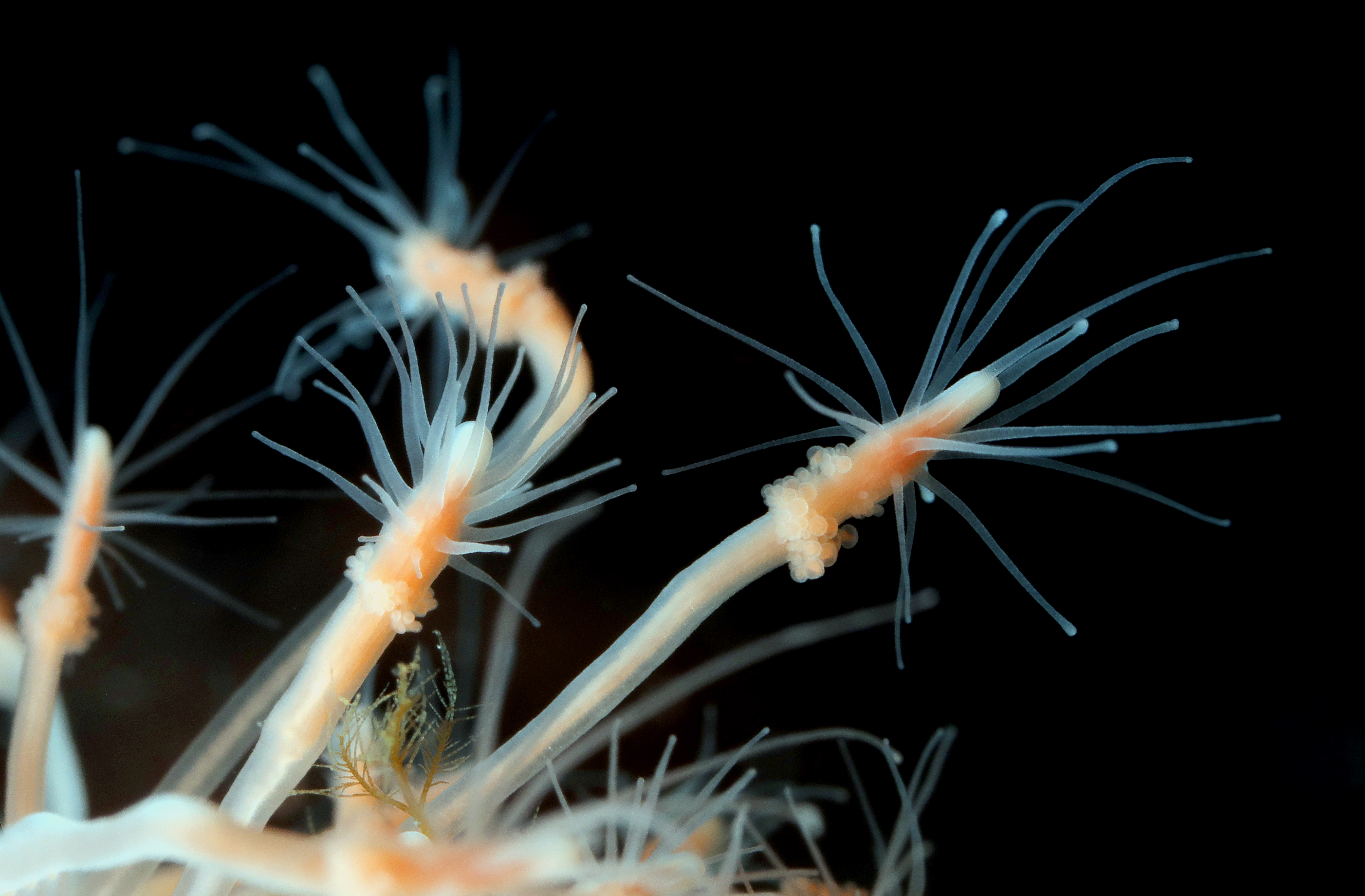Clava
Clava is a small genus with only one valid species. It includes one of the most atypical hydractiniid species in terms of shape and habitat, and as a result the genus was assigned to a different family of hydrozoans until 2001. In Norway, Clava is one of the most abundant and easy to find genera of hydroids, as well as one of the easiest to recognize.
Identification
Clava is the only hydractiniid genus in Norway in which the tentacles of the polyps are scattered instead of arranged in a whorl around the mouth. The gonophores of Clava are sporosacs without radial canals found on the polyps below the tentacles.
Look-alikes
Within Hydractiniidae other genera such as Clavactinia and Fiordlandia include species in which the polyps have scattered tentacles, but none of these occur in Norway. This characteristic is also present in other hydrozoan families and is one of the defining features of family Oceaniidae. The oceaniid genus Rhizogeton is somewhat similar to Clava, but the reproductive structures in Clava are developed on the polyps, while in Rhizogeton they are developed on the ‘root’ system of the colony (hydrorhiza).
Biology, ecology and behavior
Clava is a genus restricted to shallow waters, often present in the intertidal.
Taxonomy
Clava was for many years a member of the family Oceaniidae, which was even called Clavidae in the past. The genus was moved to Hydractiniidae in 2001, but in some lists of species it may still appear incorrectly as a member of Oceaniidae or Clavidae.
References
Schuchert P (2001). Hydroids of Greenland and Iceland (Cnidaria, Hydrozoa). Meddelelser om Grønland. Bioscience 53. Copenhagen, the Danish Polar Center. 184 pp.
Schuchert P (2008). The European athecate hydroids and their medusae (Hydrozoa, Cnidaria): Filifera Part 3. Revue suisse de Zoologie 115(2):221-302.
Schuchert P (2012). North-West European athecate hydroids and their medusae: keys and notes for the identification of the species. Field Studies Council. Synopsis of the British Fauna (New Series) No. 59. 364 pp.
